| Listing 1 - 10 of 54 | << page >> |
Sort by
|
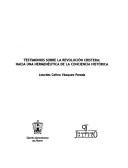
ISBN: 9709022490 9789709022490 Year: 2001 Publisher: Colotlán: Universidad de Guadalajara. Centro universitario del Norte,
Abstract | Keywords | Export | Availability | Bookmark
 Loading...
Loading...Choose an application
- Reference Manager
- EndNote
- RefWorks (Direct export to RefWorks)
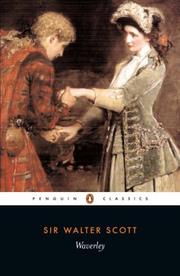
ISBN: 9780140430714 0140430717 Year: 1985 Publisher: Harmondsworth: Penguin books,
Abstract | Keywords | Export | Availability | Bookmark
 Loading...
Loading...Choose an application
- Reference Manager
- EndNote
- RefWorks (Direct export to RefWorks)
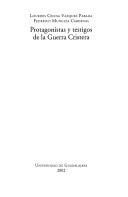
ISBN: 9702702046 9789702702047 Year: 2002 Publisher: Guadalajara, Jalisco: Universidad de Guadalajara,
Abstract | Keywords | Export | Availability | Bookmark
 Loading...
Loading...Choose an application
- Reference Manager
- EndNote
- RefWorks (Direct export to RefWorks)
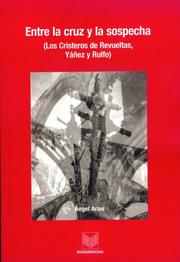
ISBN: 8484891283 3865271308 9788484891284 3964565423 Year: 2005 Publisher: Madrid: Iberoamerica,
Abstract | Keywords | Export | Availability | Bookmark
 Loading...
Loading...Choose an application
- Reference Manager
- EndNote
- RefWorks (Direct export to RefWorks)
Yáñez, Agustín --- Spanish-American literature: authors --- Rulfo, Juan --- Revueltas, José --- Mexican literature --- Cristero Rebellion, 1926-1929 --- History and criticism --- Literature and the rebellion --- Mexican literature - 20th century - History and criticism --- Cristero Rebellion, 1926-1929 - Literature and the rebellion
Book
ISBN: 0292787006 0292739648 029275633X 9780292787001 Year: 1974 Publisher: Austin: University of Texas press,
Abstract | Keywords | Export | Availability | Bookmark
 Loading...
Loading...Choose an application
- Reference Manager
- EndNote
- RefWorks (Direct export to RefWorks)
Between 1926 and 1929, thousands of Mexicans fought and died in an attempt to overthrow the government of their country. They were the Cristeros, so called because of their battle cry, ¡Viva Cristo Rey!—Long Live Christ the King! The Cristero rebellion and the church-state conflict remain one of the most controversial subjects in Mexican history, and much of the writing on it is emotional polemic. David C. Bailey, basing his study on the most important published and unpublished sources available, strikes a balance between objective reporting and analysis. This book depicts a national calamity in which sincere people followed their convictions to often tragic ends. The Cristero rebellion climaxed a century of animosity between the Catholic church and the Mexican state, and this background is briefly summarized here. With the coming of the 1910 revolution the hostility intensified. The revolutionists sought to impose severe limitations on the Church, and Catholic anti-revolutionary militancy grew apace. When the government in 1926 decreed strict enforcement of anticlerical legislation, matters reached a crisis. Church authorities suspended public worship throughout Mexico, and Catholics in various parts of the country rose up in arms. There followed almost three years of indecisive guerrilla warfare marked by brutal excesses on both sides. Bailey describes the armed struggle in broad outline but concentrates on the political and diplomatic maneuvering that ultimately decided the issue. A de facto settlement was brought about in 1929, based on the government’s pledge to allow the Church to perform its spiritual offices under its own internal discipline. The pact was arranged mainly through the intercession of U.S. Ambassador Dwight Morrow. His role in the conflict, as well as that of other Americans who decisively influenced the course of events, receives detailed attention in the study. The position of the Vatican during the conflict and its role in the settlement are also examined in detail. With the 1929 settlement the clergy returned to the churches, whereupon the Cristeros lost public support and the rebellion collapsed. The spirit of the settlement soon evaporated, more strife followed, and only after another decade did permanent religious peace come to Mexico.
Cristero Rebellion, 1926-1929 --- Church and state --- Church and state - Mexico --- Cristero Rebellion, 1926-1929. --- Church and state in Mexico. --- History
Book
ISBN: 3923087071 9783923087075 Year: 1985 Volume: 8 Publisher: Trier: Trierer historische Forschungen,
Abstract | Keywords | Export | Availability | Bookmark
 Loading...
Loading...Choose an application
- Reference Manager
- EndNote
- RefWorks (Direct export to RefWorks)
Tacitus, Cornelius. --- Rome --- History --- Histoire --- Bataver rebellion --- Julius Classicus revolt --- Julius Classicus revolt.
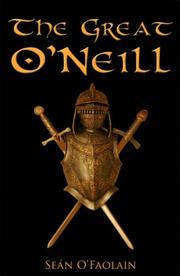
ISBN: 9780853427698 0853427690 Year: 1942 Publisher: Cork: Mercier Press,
Abstract | Keywords | Export | Availability | Bookmark
 Loading...
Loading...Choose an application
- Reference Manager
- EndNote
- RefWorks (Direct export to RefWorks)
Book
ISBN: 8878790044 9788878790049 Year: 2005 Publisher: Milano: ART,
Abstract | Keywords | Export | Availability | Bookmark
 Loading...
Loading...Choose an application
- Reference Manager
- EndNote
- RefWorks (Direct export to RefWorks)
Biographie comique du jeune martyr mexicain José Sánchez del Río. Au début du siècle dernier, une révolte aux proportions incroyables a éclaté au Mexique, qui est resté inconnu de la plupart. En 1926, le gouvernement maçonnique dirigé par Calles a commencé une persécution, qui a causé des centaines de milliers de morts, contre l'Église, visant à la déchristianisation complète du pays. Dans ce contexte, l'histoire de Josè est racontée : un petit garçon de naissance - il n'avait que 14 ans lorsqu'il a été tué - mais grand dans la foi. Ceux-ci, se rendant compte que son Église était persécutée et qu'il y avait de nombreux risques pour ceux qui voulaient vivre leur foi librement, décident de s'enrôler dans l'armée des Cristeros. Un jour, au cours d'une bataille, le cheval de son commandant est abattu et, généreusement, Josè lui donne le sien. Laissé à pied, il a été capturé par les forces gouvernementales et emprisonné. Il a subi des humiliations de toutes sortes, des tortures, des privations, il a souffert de la faim et de la soif, mais il n'a jamais renié sa foi au Christ. Pour le conduire à l'abjuration, ses geôliers lui ont écorché la plante des pieds et l'ont fait marcher pieds nus vers le cimetière, lui promettant le salut tant qu'il s'est simplement exclamé une seule fois: «Christ mourra!». José préfère affronter le peloton d'exécution plutôt que de trahir que Jésus qui - il en a toujours été certain - lui a donné la vie éternelle en récompense. José Sánchez del Río a été béatifié au Mexique le 20 novembre 2005.
Christian saints --- Comic books, strips, etc. --- Christian martyrs --- Cristero Rebellion, 1926-1929 --- Sánchez del Río, José
Book
ISBN: 9782204135450 2204135453 Year: 2019 Publisher: Paris: Cerf,
Abstract | Keywords | Export | Availability | Bookmark
 Loading...
Loading...Choose an application
- Reference Manager
- EndNote
- RefWorks (Direct export to RefWorks)
"Et si le plus grand historien du Ier siècle, celui dont les écrits corroborent le récit des Évangiles, n'avait pas encore livré tous ses secrets ? En 70, Jérusalem est détruite par les Romains. La guerre avait commencé en 66, et Flavius Josèphe, prêtre de Jérusalem, avait alors été envoyé les combattre en Galilée. Mais pourquoi, après avoir été capturé, a-t-il soudain été gracié et entretenu par ces mêmes Romains, qui lui ont ainsi permis de devenir écrivain? Quelles furent les raisons de ce revirement ? De Massada au Colisée, voici enfin publiée la biographie de ce grand historien juif de l'Antiquité qui rêva follement d'être fidèle à Jérusalem et à Rome. Une destinée moderne au sein du monde ancien, à lire comme un roman. Une fresque étonnante sur l'histoire politique."--Page 4 of cover Cette biographie de Flavius Josèphe, l'un des plus grands historiens du Ier siècle apr. J.-C., met en lumière les relations entre le pouvoir impérial romain et la communauté juive alors que l'essor du christianisme inquiète les deux parties
Historien --- Juif --- Rebellion juive, 66-73 --- Jewish historians --- Jews --- Flavius Josèphe, 37-100 --- Josephus, Flavius
Book
ISBN: 2858090823 9782858090822 Year: 1978 Publisher: Paris: ABC,
Abstract | Keywords | Export | Availability | Bookmark
 Loading...
Loading...Choose an application
- Reference Manager
- EndNote
- RefWorks (Direct export to RefWorks)
| Listing 1 - 10 of 54 | << page >> |
Sort by
|

 Search
Search Feedback
Feedback About UniCat
About UniCat  Help
Help News
News